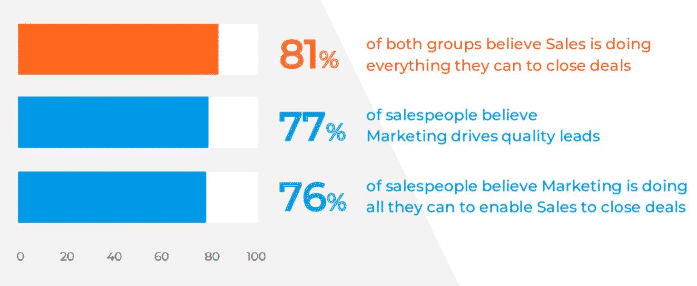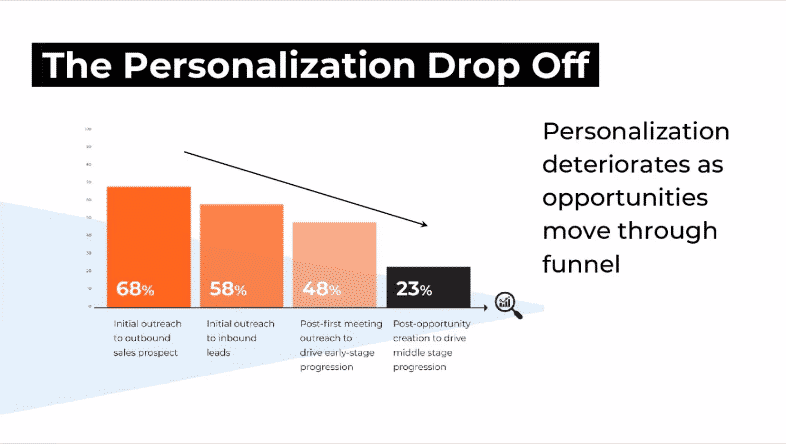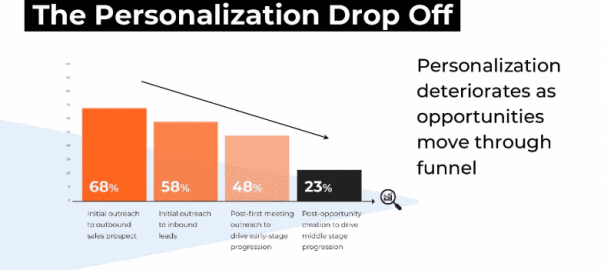Expert says personalized communications is one way to help bridge the marketing and sales divide.
For sales and marketing teams to be effective, they need to work together to engage contacts in personalized ways. And while this may have seemed difficult in the past, the evidence shows the dynamic has changed, according to B2B brand strategy boutique Renegade’s 2021 State of Account-Based Marketing (ABM) Report.
The survey brought together salespeople and marketers to understand how ABM could address some of their interdepartmental challenges.
“One of the interesting findings in this report is that the traditional divide between sales and marketing has shifted,” said Drew Neisser, Renegade’s founder, in a recent webinar. “In the ‘bad old days,’ marketing would be quick to blame sales for not following up on their ‘great leads,’ while sales would dismiss the quality of these so-called great leads.”

“While no doubt this divide still exists in many companies, those who have adopted an account-based marketing have seen a new level of detente — if not downright cooperation — and mutual respect between sales and marketing.”
The conflict has moved from a strategic issue to one of execution, Neisser said. Here are some ways he sees marketing and sales teams using ABM to address that.
Belief in the sales value of ABM
87% of marketers believe ABM helps them convert more of the pipeline, 86% believe it helps them close more deals, and 83% believe it can deliver intent data that sales can use, according to those surveyed in Renegade’s report.
“If you were wondering if these folks were just excited about the latest, shiny martech object, then guess again,” Neisser said.
Harmony across marketing campaigns

Three out of four of those surveyed have been working with ABM for at least three years, says Neisser. That’s enough time to familiarize oneself with new frameworks in our ever-shifting digital landscape.
But even more surprising than these adoptions was the level of cooperation between so many sales and marketing departments.
“One of the real shockers in this research is a newfound respect in departments,” Neisser said. “These aren’t the same fighting words you would have heard a few years ago.”
Marketers can capitalize on this unique opportunity by embracing ABM strategies, which can further align their work with sales teams by pinpointing target accounts.
Remnants of the divide between sales and marketing
Despite these shifts in the marketing/sales relationship, Neisser noted there were still remanents of “old school” companies that resisted change.
“Marketers are two times more likely to point to a lack of cooperation with sales as a reason ABM isn’t working,” he said. ”And sales is more confident they are building awareness among targeted accounts.”
Getting these departments on the same page can help reduce tension. Brands should identify whether the problems arise from the ABM strategy or a disconnect in communication or processes between sales and marketing.
The new personalization challenge
96% of both survey groups believe that personalized communications are more effective than non-personalized communications.
“The problem,” said Neisser, “is that personalized engagement isn’t scaling. Personalization at scale is time-consuming, it’s difficult to do.”
He added, “Often this is due to an inability to use intent data and outreach at various touchpoints.”

Neisser pointed to personalization data (shown above), highlighting the sobering fact that personalization deteriorates as leads move further down the sales funnel. Marketers can help address this issue by adjusting their ABM strategy to offer more personalization options at each touchpoint.
Finding a scalable ABM strategy
Manual solutions to the personalization problem aren’t workable for many brands. 70% of salespeople spend at least 10 hours per week researching prospects, at an average cost of $ 47,503 per year, according to the survey. That’s why marketers need ABM’s time- and labor-saving capabilities to offer personalization at scale.
“How do you personalize communications at scale?” Neisser said. “The answer is through a crafted combination of people, process, and technology.”
James B. Stanton, Vice President of Marketing at Empyrean Benefit Solutions, highlighted the gap ABM can bridge between sales and marketing operations in the same webinar: “ABM is that reflection of marketing and sales working together … ABM is about engaging at the account level. It means that we’re agreeing on those accounts that we want to pursue together.”
The post How ABM strategies bring marketing and sales together appeared first on MarTech.
(28)







